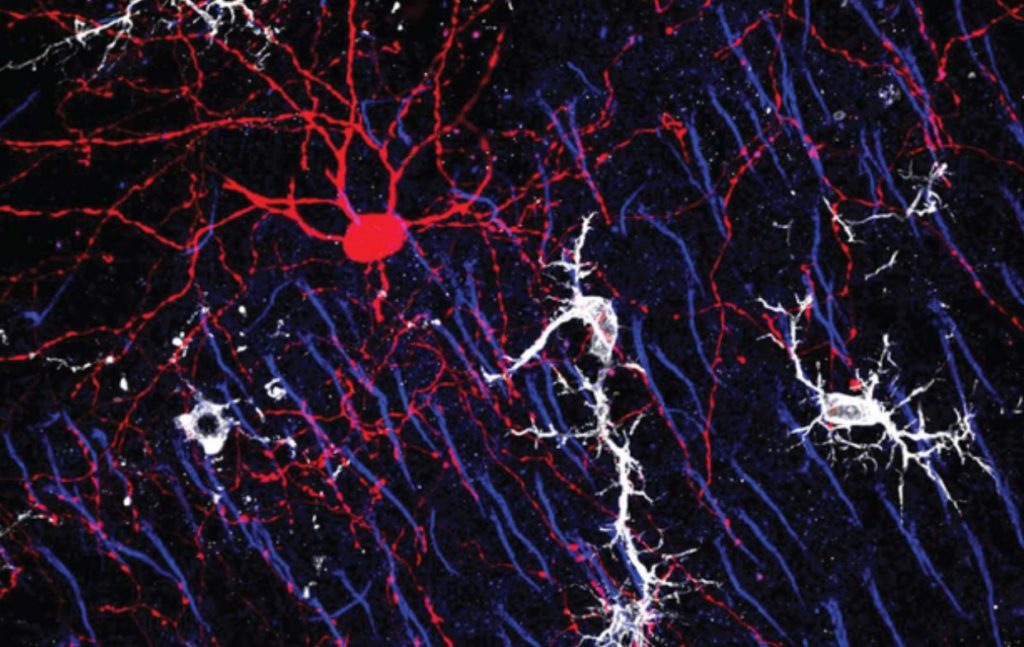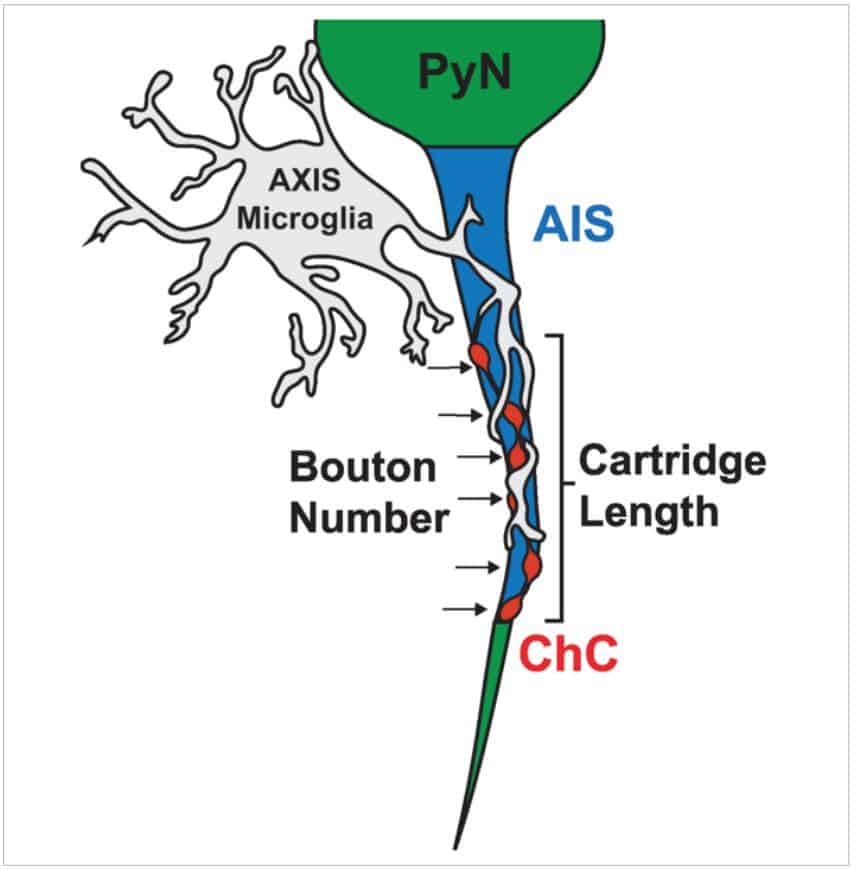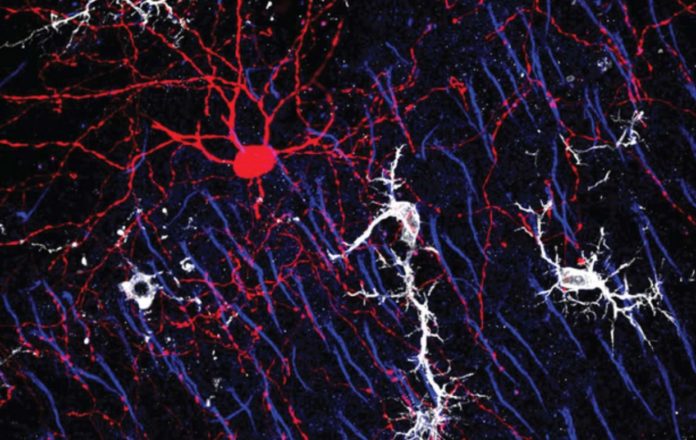Microglia, the brain’s immune cells, are notorious for consuming undesired objects such as germs and debris, just like their counterparts in the rest of the body.
In early development, some microglia eliminate unnecessary connections, or synapses, in order to shape the ordered circuitry of the adult brain.
Professor Linda Van Aelst of Cold Spring Harbor Laboratory (CSHL) has discovered that microglia also assist neurons in growing synapses necessary for cognitive function in mice.
“Most immune cells are known to target and eat—let’s call it garbage,” says the professor. “But what we saw is the opposite. During a particular developmental time point, under normal physiological conditions, they did not eat any synapses that we saw, but helped the synapses form. That was quite a nice surprise.”

Van Aelst’s fascination with chandelier cells, a unique type of inVan Aelst became interested in microglia as a result of her fixation with a unique type of inhibitory neuron known as a chandelier cell. Chandelier cells are named for the way their nerve fibers look like a chandelier.
These structures come into direct touch with the axonal initial segment (AIS) of a target neuron, which triggers its firing.
This novel synaptic structure endows chandelier cells with significant control over the signaling of hundreds of adjacent neurons simultaneously.
“These synapses are critical for chandelier cells to silence the excitatory neurons. Too much excitation can contribute to disorders like epilepsy, schizophrenia, and autism,” explains Van Aelst.
She was curious as to what other cell types are involved in the creation of these synapses.

Van Aelst investigated the interaction of microglia and chandelier cells with graduate student Nicholas Gallo and research assistant Artan Berisha. They discovered that microglia wrap their armlike processes around the synapse-forming components of a chandelier cell and its target neuron, thereby enhancing the likelihood of correct synaptic formation. Puppies and young mice were more likely to engage in these particular embraces than adults.
“And that was really cool,” she says. “This is the first time that microglia have been implicated in these unique synapses as a growth-promoting function.”
The researchers next looked into what happens when microglia are damaged.
“We saw that there were less microglia going to where chandelier cells make contact on the AIS,” adds the researcher. “And we saw that fewer of these synapses formed.”
Microglia “are only one of the players that control synaptogenesis, but key players that people didn’t think of or expect,” she adds.
The researchers’ ultimate goal is to determine whether microglia can be recruited to aid in the treatment of neurological diseases.
Source: 10.1073/pnas.2114476119
Image Credit: COLD SPRING HARBOR LABORATORY
You were reading: Brain’s immune cells might help treat neurological disorders – study shows how
